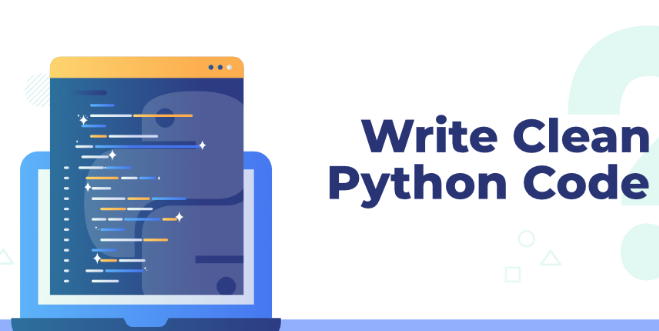Writing clean and readable Python code is essential for maintaining code quality, improving collaboration, and making your code easier to understand and maintain. Here are some best practices to follow:
- Use Meaningful Variable Names:
Choose descriptive variable names that convey the purpose and meaning of the data they represent. Avoid single-letter variable names or abbreviations that may be confusing. - Follow PEP 8 Style Guide:
PEP 8 is the official style guide for Python code. Adhering to its recommendations enhances code consistency and readability. Some key guidelines include using spaces for indentation (4 spaces per level), limiting line length to 79 characters, and using lowercase letters with underscores for variable and function names. - Write Modular and Concise Functions:
Break down complex tasks into smaller, reusable functions. Each function should have a clear purpose and should ideally perform a single task. Use meaningful function names that accurately describe what the function does. - Add Comments for Clarity:
Use comments to explain the purpose and functionality of your code. Comments help other developers (including yourself) understand the code’s intent and can be particularly useful in complex or non-obvious sections. However, avoid excessive or redundant comments that don’t provide additional value. - Write Docstrings:
Include docstrings (documentation strings) for classes, functions, and modules. Docstrings provide comprehensive information about the purpose, parameters, return values, and usage of your code. Follow the conventions outlined in PEP 257 for writing clear and well-formatted docstrings. - Break Code into Logical Blocks with Whitespace:
Use whitespace to enhance readability. Add blank lines between functions, classes, and logical blocks of code to make it easier to identify separate sections and improve visual clarity. - Be Mindful of Code Formatting:
Consistently format your code to improve readability. Use proper indentation, align elements vertically when necessary (e.g., in lists or function arguments), and apply consistent spacing around operators and punctuation. - Avoid Deep Nesting and Complex Expressions:
Excessive nesting or complex expressions can make code difficult to read and understand. Refactor nested if statements or loops into separate functions or use guard clauses to handle exceptional cases early. Break down complex expressions into smaller, more manageable parts. - Use Meaningful Comments for Intent:
In addition to regular comments, use comment statements to indicate the intent of your code. For example, comment sections like “Initialization,” “Data Processing,” or “Algorithm Implementation” help readers understand the purpose and flow of your code at a high level. - Write Unit Tests:
Unit tests are crucial for ensuring code correctness and providing documentation on how your code should behave. Invest time in writing comprehensive tests that cover different scenarios and edge cases. Testable code is often more modular and easier to understand. - Refactor and Simplify:
Regularly review your code and refactor it to improve readability and maintainability. Look for opportunities to simplify complex sections, eliminate duplication, and improve overall code structure. Prioritize writing clean code from the start and maintain it as an ongoing practice.
By following these best practices, you can write clean, readable, and maintainable Python code that is easier for yourself and others to understand. Remember that writing clean code is not just about following rules but also about fostering a mindset of clarity, simplicity, and thoughtful design.

